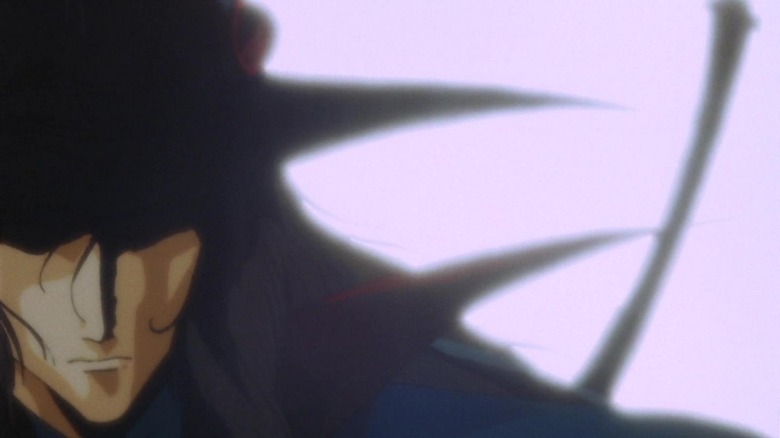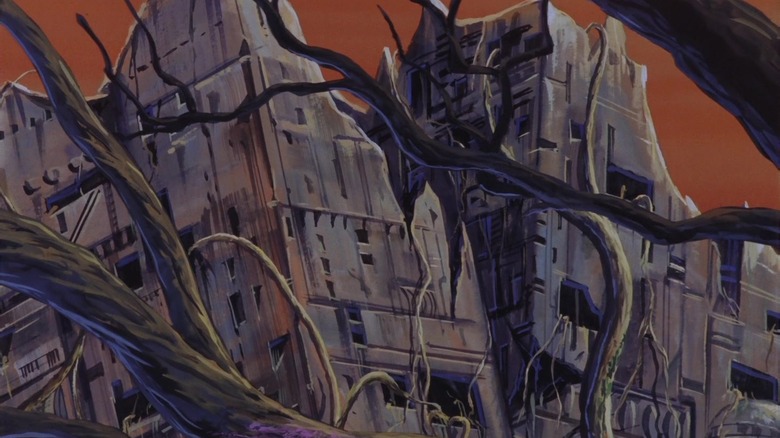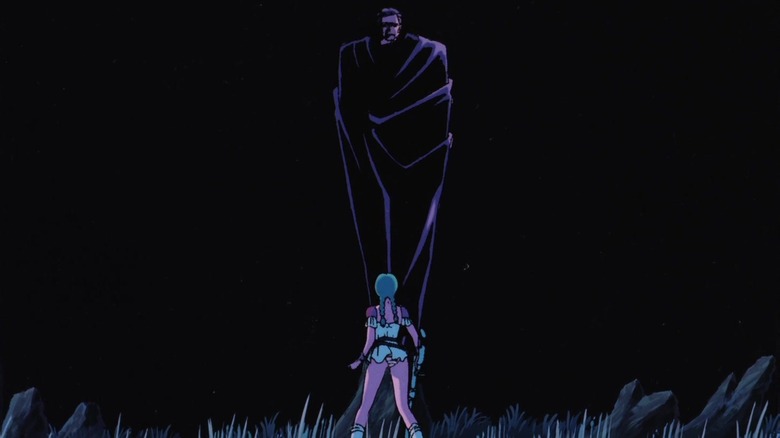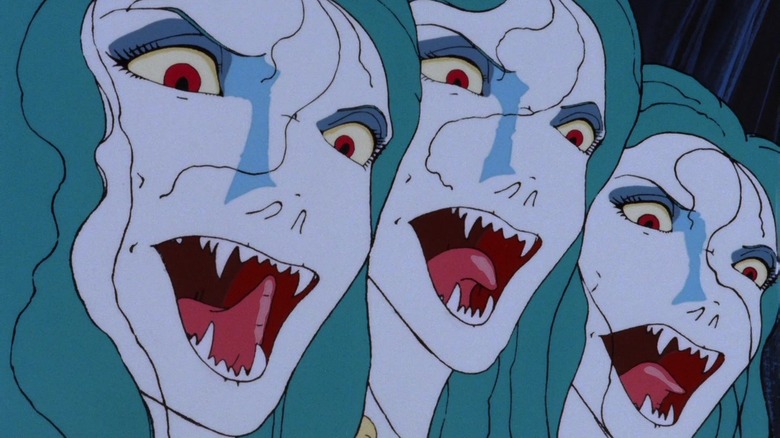Year Of The Vampire: Vampire Hunter D (1985) Paved The Way For Pulpy Adult Anime OVAs
(Welcome to Year of the Vampire, a series examining the greatest, strangest, and sometimes overlooked vampire movies of all time in honor of "Nosferatu," which turns 100 this year.)
The animated OVA (original video animation) took off in Japan around 1985. These were short animated series and movies released on video for older male audiences, often just 90 to 120 minutes long. Made for a niche viewership, they could be violent and indulgent, but many were detailed enough in their craftsmanship that they remain significant today. Riding that wave was "Vampire Hunter D," a gothic horror Western mash-up that sets its eponymous hunter against monsters, mutants, and a powerful vampire hungry for young women. The premise is simple, but the delivery is something else entirely.
"Vampire Hunter D" has many fathers. First was Hideyuki Kikuchi, who wrote the original novel series. Kikuchi trained under the famous manga writer Kazuo Koike, who taught his students to put "character first." Then there's Yoshitaka Amano, an artist most famous in the United States for his contributions to the Final Fantasy series of video games. Amano's color illustrations of D likely did as much as the novels to solidify the character in the popular imagination.
The story of 1985's "Vampire Hunter D" film is drawn from the first of Kikuchi's novels, and the character designs are provided by Amano. Bringing it all together is director Toyoo Ashida, best known otherwise for his stewardship of the long-running martial arts drama "Fist of the North Star." Before "Akira" redefined what animated movies could look like, "Vampire Hunter D" paved the way for trashy adult genre fare to flourish on video.
What it brought to the genre
The world of "Vampire Hunter D" is a truly scrumptious genre soup. The film cribs heavily from Westerns, with a cast including a humble town doctor, a spoiled mayor's son and D himself playing the Man With No Name. The film even ends with the heroine Doris and her younger brother chasing D and calling his name as he gallops away, just as the little boy in "Shane" begged his hero to come back.
But "Vampire Hunter D" isn't just a Western. It's a post-apocalyptic Western, set in the year 12,090 AD. The characters ride on cyborg horses, vampires exhibit psychic powers, and the landscape overflows with crumbling buildings and rusted metal. No explanation is ever given as to what made the world this way. Kikuchi simply takes for granted that since D is the coolest person alive, he must live in a world that lives up to his billing. Even more than the vampires, the combination of gothic architecture, sprawling technology, and freakish monsters is likely the single most influential aspect of "Vampire Hunter D."
Despite its indulgences, "Vampire Hunter D" takes care to preserve the thematic heft of the vampire archetype. As we learn at the end of the film, vampires are on the verge of extinction. As powerful as they might be, they are relics of an old world that is halfway in the grave already. By hunting vampires across the planet, D is hastening his own obsolescence. It's a potent device that further connects the story with Westerns and even samurai dramas. Just as D is the gunslinger who must live and die alone, he is also the masterless ronin whose successes heighten his own loneliness.
The limits of D
Ashida and his staff had limited resources to work with while creating "Vampire Hunter D." While there are moments of effective animation, the film resorts to cheap tricks that wouldn't be out of place in an early television production in order to save costs. Footage is repeated, speed lines substitute for movement, and people's legs are kept out of frame so as to avoid animating walking or running. In addition, while the action is constant in "Vampire Hunter D," the fights themselves are very rarely creative. D defeats most of his enemies by punching or stabbing them once, and if that doesn't work, he goes berserk and punches or stabs them again. The animation and action would be greatly improved in the 2000 follow-up "Vampire Hunter D: Bloodlust," directed by trashy action anime legend Yoshiaki Kawajiri.
Modern viewers may also be exhausted by the way "Vampire Hunter D" treats its heroine Doris. She's threatened multiple times with violence and sexual assault, is constantly ogled by the animated "camera" and isn't afforded much in the way of interior depth. Another 1985 OVA, "The Time Etranger," gave the heroine of the earlier giant robot series "GoShogun" a complex inner life. "Vampire Hunter D" is by contrast wholly dedicated to being a take-no-prisoners male power fantasy. This isn't a disaster; some of the very best anime are take-no-prisoners male power fantasies. But the film's reductive approach to character can't help but hurt it when the animation itself comes up short.
The man who is named D
Despite its significant flaws, there's plenty to appreciate in "Vampire Hunter D" if you come to it with the right attitude. Ashida and his crew make good use of a stark color palette to heighten the drama, resulting in memorable images. Its best scenes, like in the opening where Doris has her first run-in with a vampire, effectively use limited animation to produce a truly eerie atmosphere. The creature design is also consistently entertaining from beginning to end, featuring the classic horror monsters you'd expect as well as some uniquely gross terrors. Not to mention the tips of the hat to horror classics, like the villainous vampire sharing a last name with legendary actor Christopher Lee.
For me, the world of "Vampire Hunter D" remains its strongest trait. The film is packed with cool environments, rendered skillfully by the background artists. A wasteland of crumbling cities stalked by lizards. Doris's farm, riddled with tech and surrounded by crosses to ward off evil. The vampire castle, whose collapse purges the sky of storm clouds. Successive anime would borrow, directly or indirectly, from D's "anything goes" school of world-building. But while I would put many of those works ahead of 1985's "Vampire Hunter D," there's something to be said for the scrappy confidence of the 1985 original.
Put aside the threadbare animation and story of the first "Vampire Hunter D" film, and the hero remains. A tall man with long hair, a hat and a cloak, and a weird little parasite living in his hand. Kikuchi understood that any kind of pulp contrivance was acceptable with a strong enough character leading the way. "Vampire Hunter D" may be an indulgent relic of the old world. But the character survives in the cultural memory, casting a long shadow from beyond the grave.



